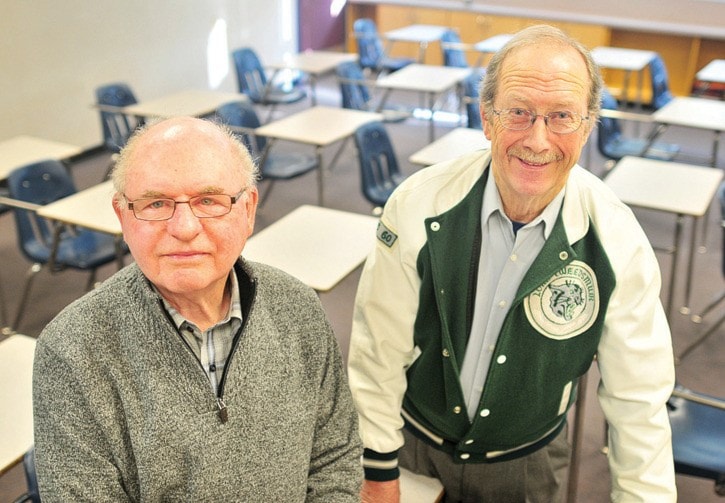Don’t tell anyone, but Alan Clegg was once responsible for the evacuation of Lord Tweedsmuir High School.
It’s a true story, says the 69-year-old former Tweedsmuir student with a chuckle – part of a Grade 12 high school science project gone wrong in 1960 during his graduating year, when Clegg and his classmates were assigned to produce chlorine gas for credit.
It’s an experiment that would hardly be suggested nowadays, he admits.
Jack Brown wasn’t around at the time, but did teach social studies, history, law and career education at the school from 1971 to 1998 – and taught Clegg’s three now-grown children.
Today, Brown and Clegg, both retired, are working together on the reunion for the schools’ 100th anniversary on June 2.
“We’re celebrating the oldest high school in Surrey,” says Clegg.
Brown, a local historian and the charter chairman of the Lord Tweedsmuir Alumni Association, says the school’s origins date back to 1912, when a first-year junior high class was added to the five-room Cloverdale Public School.
That school was located just west of today’s Cloverdale Traditional School on 56 Avenue.
In 1917, Surrey’s had its first (sole) secondary graduate, and the school was renamed Cloverdale Superior School.
The following year, there were no graduating students.
In 1919, with six grads, the school was renamed Surrey High School; in 1922, it moved to present-day Cloverdale Traditional School, where it stayed until 1957.
The school underwent several name changes, finally adopting the name Lord Tweedsmuir in 1940 to honour the late governor general John Buchan, after he passed away that year. (The word “secondary” only began to be used in the 1990s with school district restructuring).
The high school moved to (more or less) its current location on 180 Street near 60 Avenue in 1957, and was rebuilt in its present form in 1993 (though its population was split in 1999, with half of the revised catchment-area students moving to Clayton Heights Secondary School).
Brown says school is a major part of people’s lives.
“They identify, build friendships which last into adulthood and it’s really important to see those people and re-establish the connections.”
Clegg adds that there have also been queries from students about their former teachers.
“The attendance of teachers is hugely important. Whenever they hear there will be a school reunion, they want their favourite teachers to be invited to be there. Many students have that bonding that they’ve never lost.”
